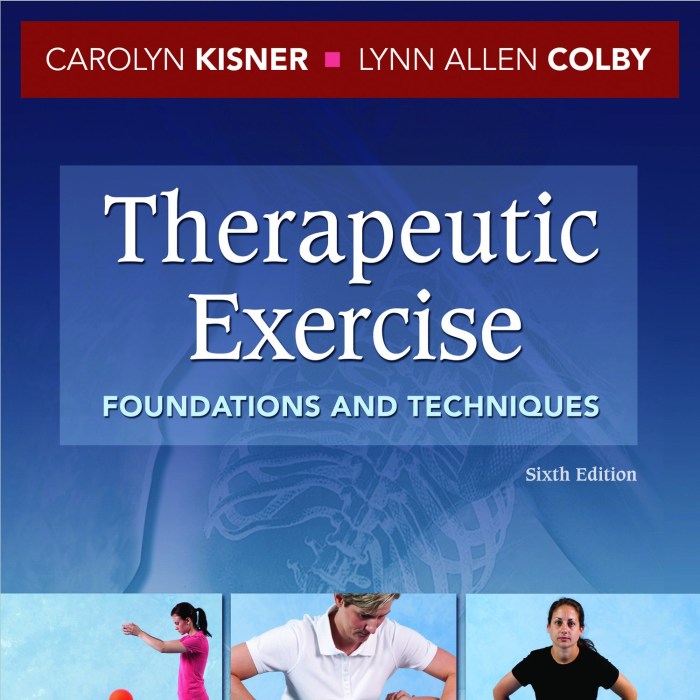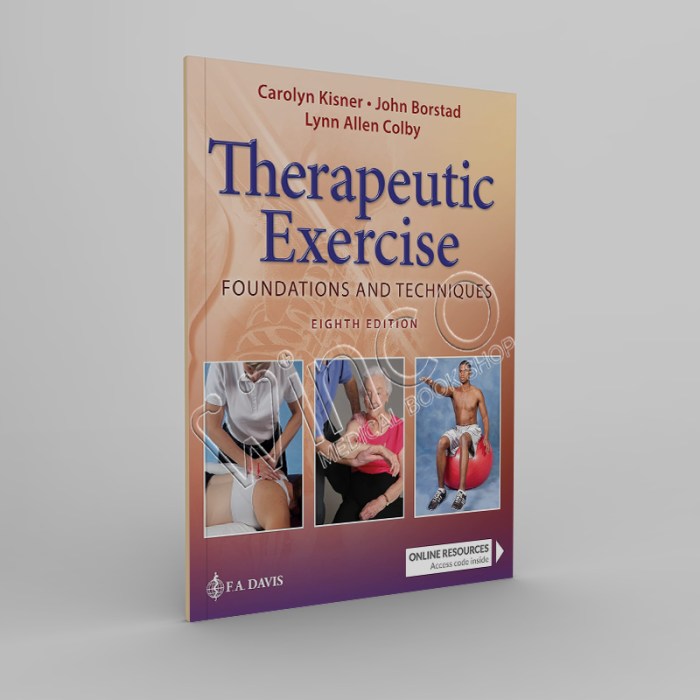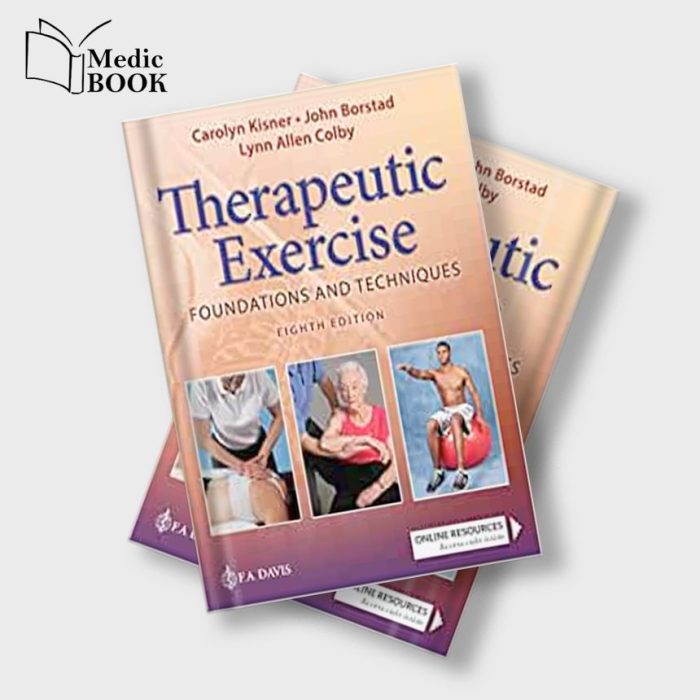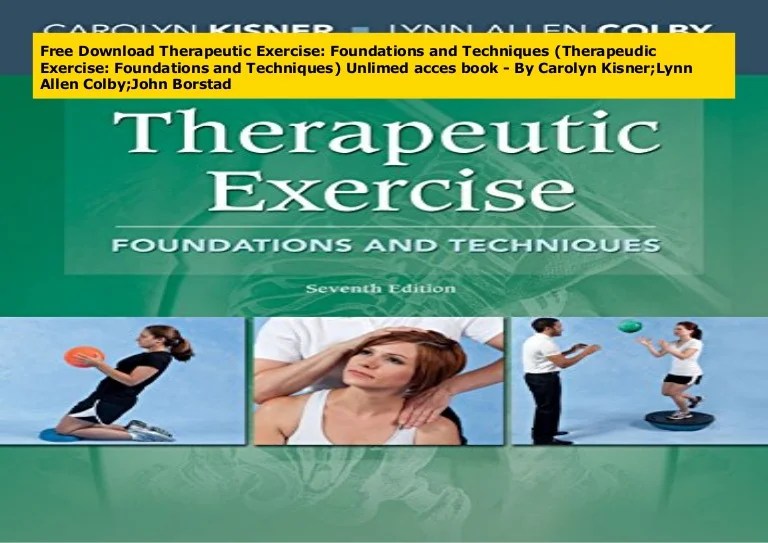Therapeutic exercise foundations and techniques 8th edition – Therapeutic Exercise Foundations and Techniques, 8th Edition is the definitive guide to the principles and practice of therapeutic exercise. This comprehensive textbook provides a clear and concise overview of the field, covering everything from the basic principles of assessment and planning to the latest advances in research and development.
With its engaging writing style and wealth of illustrations, Therapeutic Exercise Foundations and Techniques, 8th Edition is an essential resource for students, clinicians, and researchers alike.
The book begins with a discussion of the basic principles of therapeutic exercise, including the role of evidence-based practice. It then goes on to cover the neuromuscular aspects of therapeutic exercise, including the neurophysiological basis of movement and the different types of muscle contractions.
The book also provides a detailed overview of the musculoskeletal system, including the structure and function of the joints, muscles, and bones. This information is essential for understanding the principles of therapeutic exercise and for developing effective treatment plans.
Introduction

Therapeutic exercise plays a pivotal role in the healthcare field, facilitating the restoration and maintenance of optimal physical function in individuals with various conditions.
The 8th edition of “Therapeutic Exercise Foundations and Techniques” serves as a comprehensive resource for healthcare professionals, including physical therapists, occupational therapists, athletic trainers, and nurses, who are involved in the delivery of therapeutic exercise interventions.
Basic Principles of Therapeutic Exercise: Therapeutic Exercise Foundations And Techniques 8th Edition

Therapeutic exercise encompasses a set of principles that guide its implementation:
- Assessment:Gathering information about the patient’s condition, impairments, and functional limitations.
- Planning:Developing an individualized exercise program based on the assessment findings.
- Intervention:Implementing the exercise program with appropriate techniques and dosage.
- Evaluation:Monitoring the patient’s progress and modifying the program as necessary.
Evidence-based practice plays a crucial role in therapeutic exercise, ensuring that interventions are supported by scientific evidence and clinical experience.
Neuromuscular Aspects of Therapeutic Exercise
Neurophysiological Basis of Movement
Therapeutic exercise interventions are based on the neurophysiological principles of movement:
- The nervous system controls and coordinates movement.
- Motor units are the basic units of muscle contraction.
- Proprioception provides information about body position and movement.
Types of Muscle Contractions
Therapeutic exercise utilizes different types of muscle contractions:
- Isotonic:Muscle length changes during contraction.
- Isometric:Muscle length remains the same during contraction.
- Isokinetic:Muscle contraction occurs at a constant velocity.
Musculoskeletal System and Therapeutic Exercise

Structure and Function of the Musculoskeletal System, Therapeutic exercise foundations and techniques 8th edition
The musculoskeletal system consists of bones, muscles, joints, and connective tissues.
It provides support, movement, and protection for the body.
Common Musculoskeletal Conditions
Therapeutic exercise is commonly used to address musculoskeletal conditions such as:
- Osteoarthritis
- Rheumatoid arthritis
- Spinal cord injuries
- Fractures
Therapeutic Exercise Techniques
Types of Therapeutic Exercise Techniques
Therapeutic exercise encompasses a wide range of techniques:
- Active:Exercises performed by the patient without assistance.
- Passive:Exercises performed by a therapist or device.
- Resistive:Exercises that involve resistance against the patient’s movement.
Indications and Contraindications
The selection of exercise techniques depends on the patient’s condition and goals:
- Indications:Specific conditions or impairments that benefit from a particular technique.
- Contraindications:Conditions or situations where a particular technique should be avoided.
Assessment and Evaluation in Therapeutic Exercise

Assessment Methods
Assessment in therapeutic exercise includes:
- History and physical examination:Gathering information about the patient’s symptoms, medical history, and physical function.
- Functional tests:Assessing the patient’s ability to perform specific tasks.
- Outcome measures:Standardized tests to measure changes in function or pain.
Importance of Ongoing Evaluation
Ongoing evaluation is crucial for monitoring progress and adjusting the exercise program as needed:
- Tracks the patient’s response to treatment.
- Identifies areas for improvement or modification.
- Ensures the patient is making progress towards their goals.
Case Studies and Examples
Case studies and examples provide practical illustrations of the application of therapeutic exercise principles and techniques.
They demonstrate the challenges and successes encountered in the implementation of therapeutic exercise programs.
Future Directions in Therapeutic Exercise
Therapeutic exercise is constantly evolving, with emerging trends and advancements:
- Technology:Use of technology to enhance exercise delivery and monitoring.
- Precision medicine:Tailoring exercise programs to individual patient characteristics.
- Interdisciplinary collaboration:Collaboration between healthcare professionals to optimize patient outcomes.
Commonly Asked Questions
What is therapeutic exercise?
Therapeutic exercise is a type of exercise that is used to treat or prevent injuries and illnesses. It can be used to improve range of motion, strength, flexibility, and balance. Therapeutic exercise can also be used to reduce pain and swelling, and to improve overall fitness.
Who can benefit from therapeutic exercise?
Therapeutic exercise can benefit people of all ages and abilities. It is particularly beneficial for people who have injuries or illnesses that affect their movement or function. Therapeutic exercise can also be used to improve overall fitness and well-being.
How often should I do therapeutic exercise?
The frequency of therapeutic exercise will vary depending on the individual’s needs and goals. It is important to work with a qualified healthcare professional to develop an individualized exercise plan.